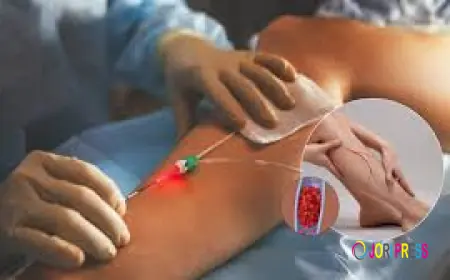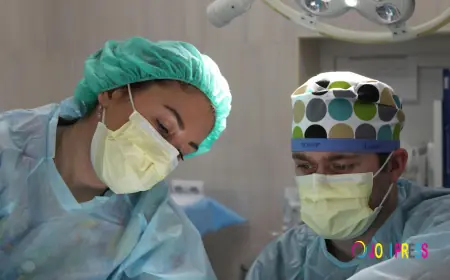Natural and Non-Surgical Solutions for Lower Back Pain in San Antonio
Discover natural and non-surgical solutions for lower back pain san antonio. Reduce discomfort, improve mobility, and prevent future pain effectively.
Living with lower back pain san antonio can be frustrating, especially when you want relief without surgery or heavy medications. Fortunately, there are numerous natural and non-surgical options that can help reduce pain, improve mobility, and enhance quality of life. This guide explores the most effective approaches, from lifestyle adjustments to holistic therapies.
Understanding Lower Back Pain
Lower back pain can result from muscle strain, ligament injuries, herniated discs, arthritis, poor posture, or chronic conditions. Non-surgical treatments focus on relieving discomfort while promoting healing and preventing recurrence. Recognizing the root cause is crucial for choosing the right natural solution.
Natural Solutions for Lower Back Pain
Physical Therapy and Exercise
Targeted exercises strengthen core and back muscles, improve flexibility, and reduce strain on the spine. Physical therapists can design a personalized routine to address your specific condition, including stretches for the hamstrings, hips, and lower back.
Yoga and Pilates
Both yoga and Pilates emphasize core strength, flexibility, and posture. Gentle stretches and breathing techniques can help alleviate muscle tension and improve spinal alignment.
Massage Therapy
Massage relaxes tight muscles, reduces pain, and improves blood flow. Techniques like deep tissue massage or myofascial release can be particularly effective for chronic lower back pain.
Chiropractic Care
Chiropractic adjustments aim to realign the spine, relieve nerve pressure, and restore mobility. Regular sessions can help reduce pain episodes and improve overall spinal health.
Acupuncture
Acupuncture stimulates specific points in the body to release endorphins and improve circulation. Many patients experience significant pain reduction and relaxation after treatments.
Heat and Cold Therapy
Applying heat relaxes tight muscles and increases blood flow, while cold packs reduce inflammation and numb acute pain. Alternating between heat and cold can enhance recovery.
Mind-Body Techniques
Practices such as meditation, deep breathing, and mindfulness can help manage pain perception, reduce stress, and improve coping mechanisms for chronic discomfort.
Lifestyle Adjustments to Support Spine Health
Maintain a Healthy Weight
Excess weight increases pressure on the lower back, contributing to pain. A balanced diet and regular exercise can help reduce this strain.
Improve Posture
Proper posture reduces stress on the spine and muscles. Avoid slouching, use supportive chairs, and maintain neutral alignment while standing and walking.
Ergonomic Work Environment
Adjusting desk height, chair support, and monitor position can minimize strain during work hours, particularly for those who sit for long periods.
Activity Modification
Avoid repetitive movements that exacerbate pain and include gentle physical activity like walking or swimming to keep muscles engaged without overexertion.
Adequate Sleep
A supportive mattress and proper sleeping positions, such as sleeping on your side with a pillow between your knees, help maintain spinal alignment and reduce pain.
Alternative Therapies
Herbal Remedies and Supplements
Some natural supplements like turmeric, omega-3 fatty acids, and magnesium may reduce inflammation and muscle tension. Always consult a healthcare provider before starting supplements.
Hydrotherapy
Warm water exercises or soaking in a hot bath can relieve muscle stiffness, improve circulation, and promote relaxation.
TENS Therapy (Transcutaneous Electrical Nerve Stimulation)
TENS devices use mild electrical currents to block pain signals and stimulate endorphin production. This method can be used at home for ongoing pain relief.
Behavioral Therapy
Cognitive-behavioral therapy (CBT) helps patients manage chronic pain by changing the way they perceive and respond to discomfort, reducing stress-related aggravation.
When to Combine Natural Solutions with Medical Care
While natural and non-surgical treatments are effective for many, some cases require medical evaluation. Seek professional help if you experience:
-
Severe or worsening pain
-
Numbness or tingling in the legs
-
Weakness or difficulty walking
-
Loss of bladder or bowel control
-
Pain following an injury or accident
Combining natural therapies with guidance from a healthcare provider ensures safe and effective management of lower back pain san antonio.
Preventing Future Episodes
Regular Exercise
Strengthening the core and back muscles reduces the risk of recurrent pain. Include low-impact activities like swimming, walking, or cycling.
Proper Lifting Techniques
Bend at the knees, keep your back straight, and avoid twisting while lifting heavy objects.
Stretching Routine
Daily stretches for the spine, hips, and legs maintain flexibility and reduce stiffness.
Ergonomic Awareness
Consistently adjust your workstation, seating, and sleeping arrangements to support spinal alignment.
Mindfulness and Stress Management
Stress can exacerbate chronic pain. Techniques like meditation, deep breathing, or progressive muscle relaxation can help manage discomfort.
Conclusion
Managing lower back pain san antonio naturally is possible with the right combination of exercises, therapies, lifestyle adjustments, and preventive measures. Non-surgical solutions not only reduce pain but also enhance overall health, flexibility, and quality of life. Integrating physical therapy, chiropractic care, yoga, massage, and mindfulness techniques creates a holistic approach to spine health.
FAQs about Lower Back Pain in San Antonio
Q1: Can natural therapies fully replace medical treatments for lower back pain?
A: For mild to moderate cases, natural therapies can be highly effective. Severe conditions may still require medical evaluation and intervention.
Q2: How long does it take to see improvement with natural treatments?
A: Improvement varies by individual and condition. Many patients notice relief within a few weeks of consistent therapy and exercise.
Q3: Are exercises safe for all types of lower back pain?
A: Most gentle, low-impact exercises are safe, but always consult a healthcare provider if you have a serious underlying condition.
Q4: Which is better for back pain: heat or cold therapy?
A: Cold therapy reduces inflammation for acute injuries, while heat relaxes muscles and improves circulation for chronic pain. Alternating both is often most effective.
Q5: How can I prevent lower back pain from recurring naturally?
A: Maintain core strength, proper posture, ergonomic practices, regular exercise, and stress management techniques to reduce recurrence.
What's Your Reaction?
 Like
0
Like
0
 Dislike
0
Dislike
0
 Love
0
Love
0
 Funny
0
Funny
0
 Angry
0
Angry
0
 Sad
0
Sad
0
 Wow
0
Wow
0

















































